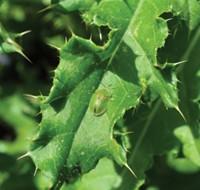Advertisement
Grab your lab coat. Let's get started
Welcome!
Welcome!
Create an account below to get 6 C&EN articles per month, receive newsletters and more - all free.
It seems this is your first time logging in online. Please enter the following information to continue.
As an ACS member you automatically get access to this site. All we need is few more details to create your reading experience.
Not you? Sign in with a different account.
Not you? Sign in with a different account.
ERROR 1
ERROR 1
ERROR 2
ERROR 2
ERROR 2
ERROR 2
ERROR 2
Password and Confirm password must match.
If you have an ACS member number, please enter it here so we can link this account to your membership. (optional)
ERROR 2
ACS values your privacy. By submitting your information, you are gaining access to C&EN and subscribing to our weekly newsletter. We use the information you provide to make your reading experience better, and we will never sell your data to third party members.
Environment
The work of parasitic plants
November 27, 2006
| A version of this story appeared in
Volume 84, Issue 48
Regarding your article on Cuscuta pentagona, I regret that the only angle of interest in this work was on how to eradicate species of Cuscuta that prey on agricultural crops (C&EN, Oct. 2, page 15). Cuscuta salina is an important keystone species in Southern California, and there are other species of Cuscuta that form part of a healthy chaparral and watershed habitats.
Much like wolves and bears, when parasitic plants are in their native environment, they play an essential role in keeping any one species from forming a monoculture, and therefore help to increase and preserve biodiversity.
Christina Simokat
Encinitas Calif.




Join the conversation
Contact the reporter
Submit a Letter to the Editor for publication
Engage with us on Twitter